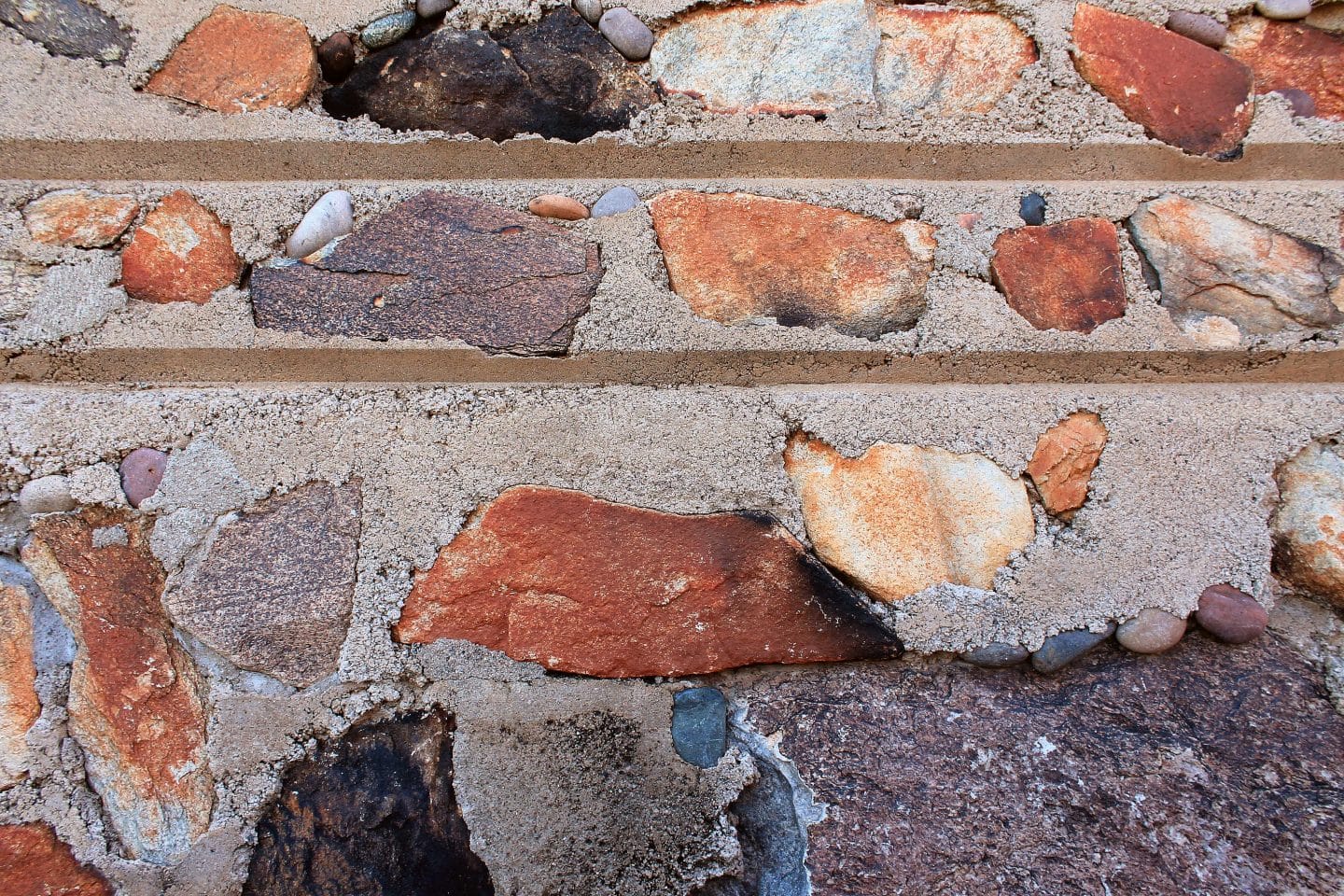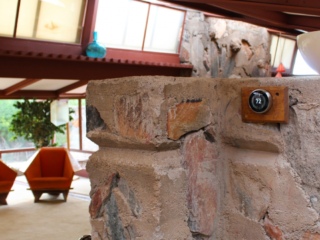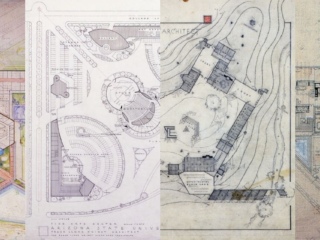
Living with Nature: Passive Energy Techniques
Frank Lloyd Wright Foundation | Dec 23, 2019
As the Frank Lloyd Wright Foundation embraces more sustainable, innovative practices in our preservation work and beyond, we’re sharing some of these methods, and providing some tips on how you can incorporate these practices into your own home and life. Here, we discuss how Frank Lloyd Wright used the natural environment to create more comfortable structures.
Frank Lloyd Wright is known for effortlessly blending interiors and exteriors through his architectural designs, using principles of organic architecture. Wright also used the natural environment to his advantage by implementing basic design principles that make the most of the elements and the climate. In this edition of Living with Nature: Sustainable Practices from the Frank Lloyd Wright Foundation, we’re focusing on the topic of passive energy techniques.

Desert masonry used to construct Taliesin West helps store heat, keeping the interiors comfortable throughout the year.
Before mechanical systems were available and heavily used in structures, Wright had to get creative in order to make living in the extreme desert climate at Taliesin West comfortable. Wright utilized thoughtful practices in architecture by considering the placement of the buildings in orientation to the sun, the building materials, and more.
For example, the desert masonry the buildings are constructed of ranges from 12-18 inches in thickness, and in the warm summer months it prevents heat from transferring to the interiors. In the cooler winter months, the walls absorb radiant energy from the sun during the day and release this warmth in the evening, in turn warming the interiors.
In the breezeway that goes through the main building at Taliesin West, Wright used the Venturi Effect to create a cool, natural airflow. Another technique Wright used at Taliesin West was natural lighting. By installing canvas, translucent material on the roofs, daylight is able to filter through and provide the right amount of lighting needed during the day. This lessens the need for artificial lighting during the day, and ultimately helps save energy.
These are just some of the practices Wright utilized at his winter home and desert camp. When constructing a building or considering a remodel of an existing building, it’s important to consider these basic design principles to see how you can build in harmony with nature to not only take advantage of the natural environment but also to save energy.

Canvas roofing in the Drafting Studio at Taliesin West, seen here in 1965, allows natural light in and eliminates the need for artificial lighting.
Here are some more great tips on how you can incorporate these ideas into your own home and life:
- When constructing or remodeling a building, choose materials that help maintain the temperature of the interiors. Using thermal mass materials including concrete, filled concrete block, stone, or masonry can help regulate temperatures, keep interiors comfortable, and help you save on energy.
- Use natural light sources whenever possible. During the day, instead of turning on electronic-powered lights, use natural light.
- When choosing a site for a building, orient it so it aligns with the solar patterns in order to take advantage of passive heating. Taliesin West is oriented 15 degrees east of south, so that the building is exposed to more morning sun than afternoon sun, allowing the building to heat earlier in the day.
- Educate yourself about how you can use passive energy techniques in your own home. Even if you aren’t constructing or remodeling a building, there are small ways you can implement these basic design principles into your home.
Check back next month to learn more about the sustainable practices we’re using at Taliesin and Taliesin West, and for even more tips on how you can help contribute to a more sustainable, beautiful world.
Living with Nature: Sustainable Practices from the Frank Lloyd Wright Foundation is a year-long campaign where we’ll be sharing sustainable practices and how they play an important part in conservation for National Historic Landmark sites, like Taliesin West in Arizona and Taliesin in Wisconsin. Along the way we’ll be sharing helpful tips on how you can incorporate these practices into your own life, to help you live a more green life.




